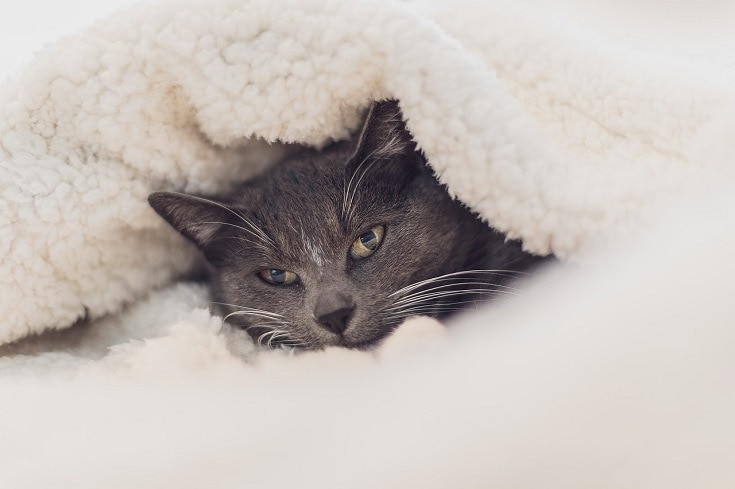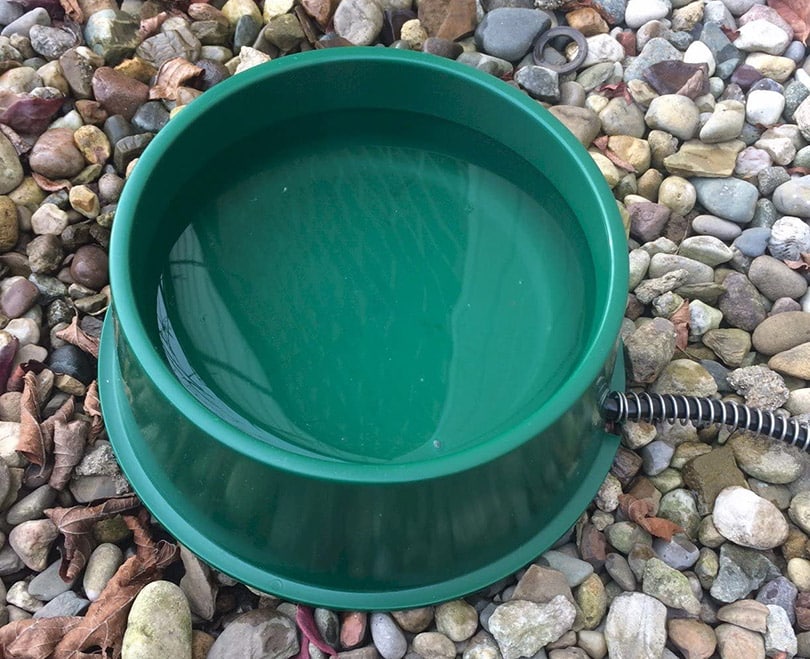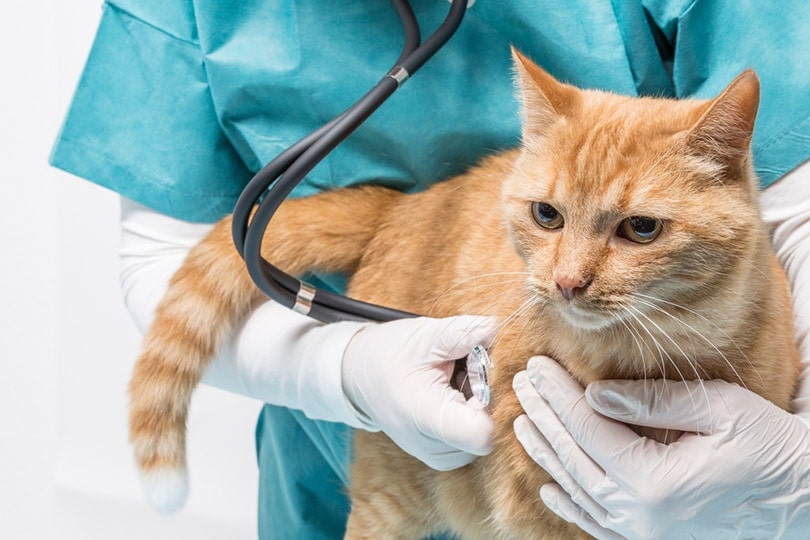Is My Cat Overweight? Vet-Verified Ways to Spot Feline Obesity & Prevention
Updated on
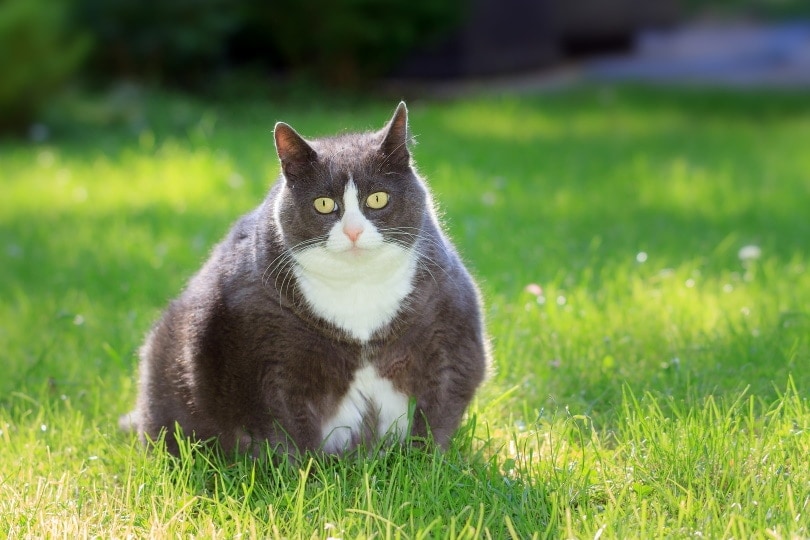
Many cats are commonly stereotyped as fat, lazy, and only interested in long naps and plentiful meals. There is some truth to this concept. Cats really do spend most of their day sleeping and will opportunistically eat whenever they can, as these are traits needed for survival in the wild, which are hardwired into their DNA. However, unlike wild cats, our pet cats don’t struggle to find food. Being consistently inactive and eating more than their dietary requirements results in an overweight feline.
It’s estimated that close to half of all pet cats are overweight, often obese. Like humans, obesity in cats can lead to a slew of health problems, which we’ll discuss later in this article. First, we’ll learn how you can tell if your cat is overweight. Finally, we’ll talk about what to do if it turns out your feline companion is carrying a few pounds too many.
What Is Feline Obesity?
A cat is considered overweight if they are 10-20% above their ideal body weight and obese if they weigh 20% more1 than what their ideal weight should be. The ideal weight for your cat is based on several factors: your cat’s breed, sex, and genetics.
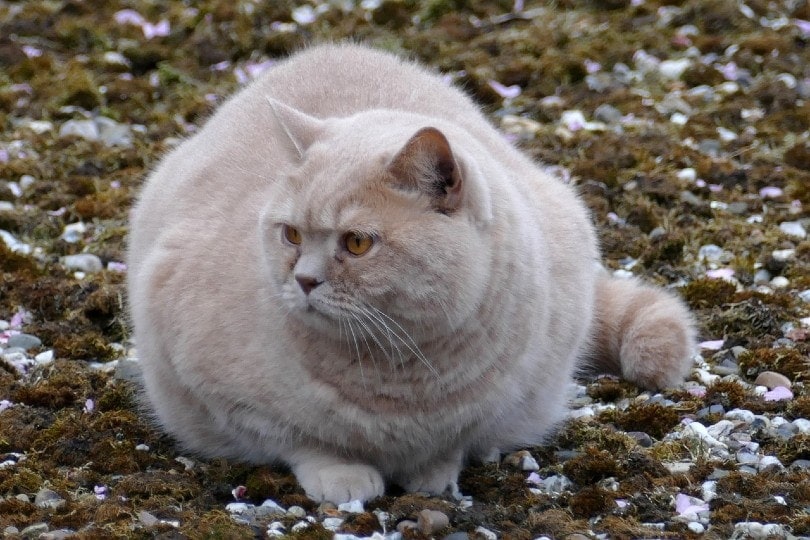
What Causes Obesity in Cats?
Obesity is the result of calorie input being higher than calorie expenditure. Cats are particularly at risk of becoming obese if their owners free-feed their cats or leave food in their bowls all day rather than serving measured meals. Given the constant opportunity, many cats eat too much. Combine this with the decreased activity level most indoor cats maintain, and voila! Obese cats galore!
That being said, there are other risk factors that increase the likelihood of your cat being obese.
- Lack of exercise
- Increasing age
- Genetics
- Neutering
- Certain endocrine disorders2
- History of being prescribed certain drugs
Why Is Feline Obesity a Problem?
Obesity is the most common nutritional issue in cats. Obesity in cats is associated with many health problems. Some of the problems you may find in obese cats include:
- Decreased life expectancy
- Lower quality of life
- Chronic inflammation
- Exercise and heat intolerance
- Joint and musculoskeletal problems, such as arthritis
- Compromised immune function
- Increased risk for diabetes and hepatic lipidosis
- Increased risk of heart problems
- Increased risk of urinary bladder stones
- They are unable to groom themselves
How to Tell if Your Cat Is Overweight
In many cases, your veterinarian may be the one to alert you about your cat’s increased weight during their annual physical exam. However, here are some ways to examine your cat and figure out if they’re overweight.
1. Rib Check
Run the palms of both hands along your cat’s sides, using light pressure. If you can’t easily feel your cat’s ribs, there’s a good chance it’s because your cat has built up a layer of fat. In a normal-weight cat, the ribs are easily palpable during this check.
2. Profile Check
Look at your cat from the side. If your cat doesn’t have a visible tuck to their belly, meaning their lower body line curves upward from front to back, your cat is likely overweight. You may also notice fat deposits on your cat’s back, head, and legs.
3. Overhead Check
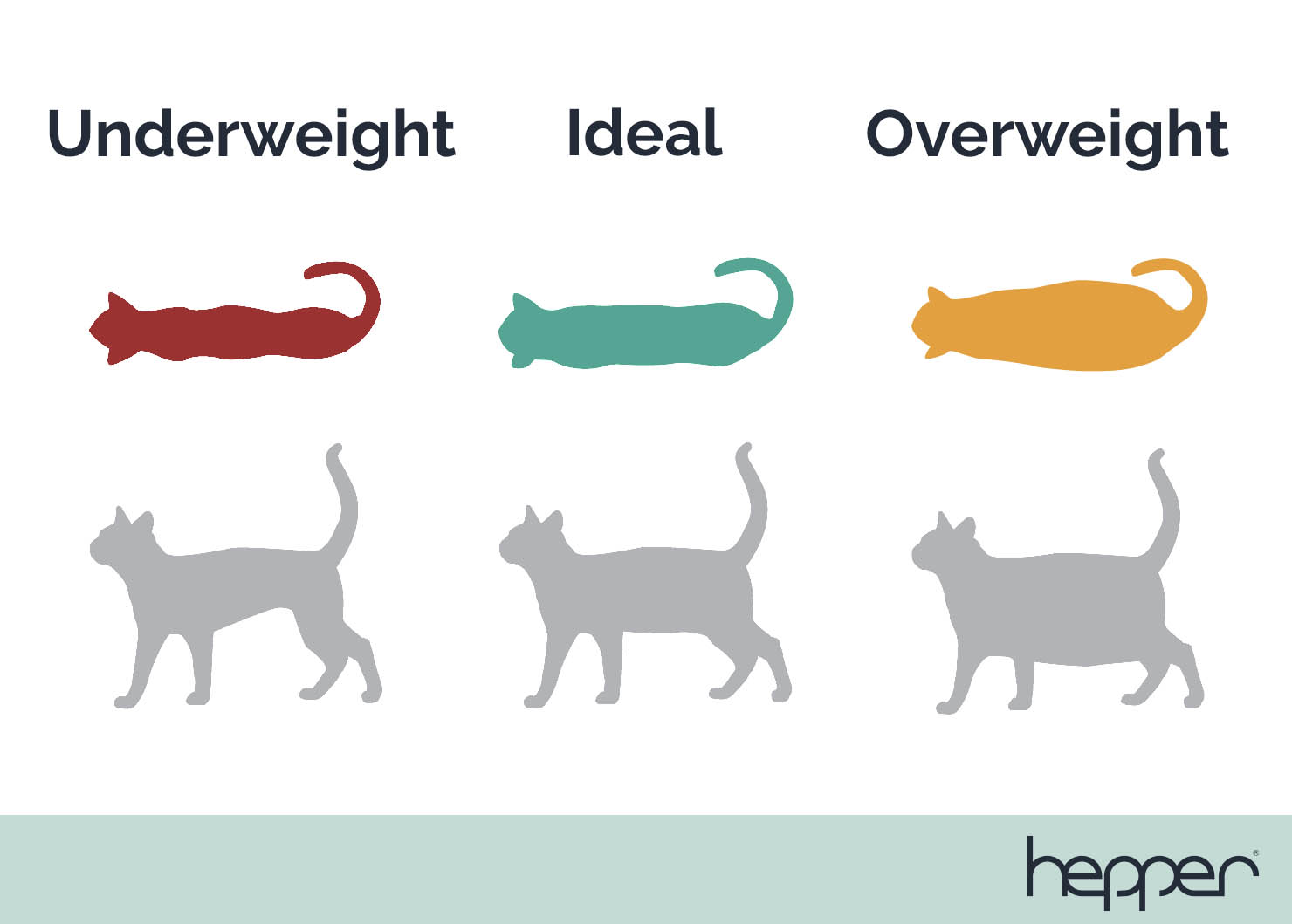
Stand next to your cat and look down at them. Your cat should have an easily visible waistline or body narrowing behind their ribcage. You should be able to tell where your cat’s shoulders, chest, and waist are based on the visible curves of their body. If your cat has no waist and only one visible curve, somewhat resembling a basketball, they’re probably overweight.
4. Weigh Your Cat
This seems like the most obvious and accurate answer. However, it will only work if you have an idea of what your cat weighed before you began to suspect they were gaining weight. Therefore, it is a good idea to regularly weigh your cat at home. A weight check once or twice per month is recommended. If you don’t have a pet scale, an easy way to calculate your cat’s weight is by using a human scale:
- Stand on the scale yourself and record your weight.
- Hold your cat and step back on the scale to see your combined weight.
- To determine your cat’s weight, subtract your weight from the combined reading of you and your cat’s weight (answer of Step 2 minus answer of Step 1).
5. Observe Behavior Changes
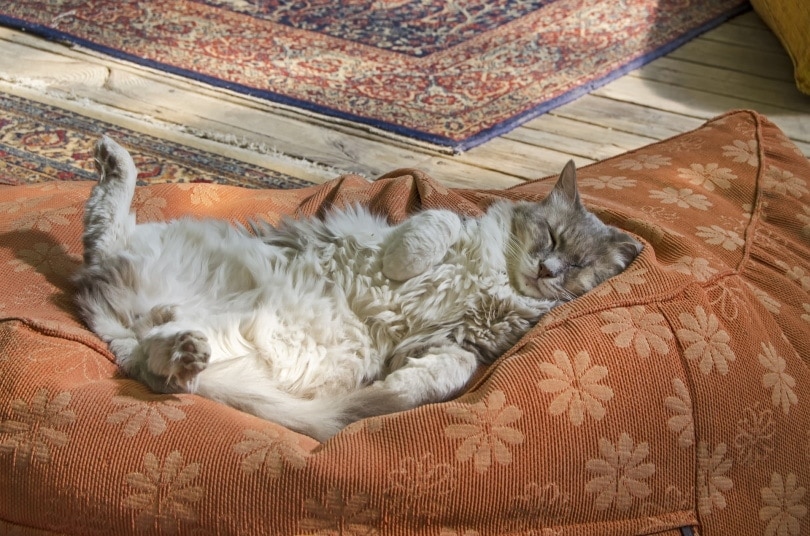
If your cat is carrying excess weight, you may notice they start to become less active. They may become reluctant or unable to jump up on the couch or climb stairs like they used to. Your cat also might seem to get out of breath or tired more easily when they do move around. Obesity isn’t the only cause for some of these signs, so if you’re noticing them, make an appointment with your veterinarian.
What to Do if Your Cat Is Overweight
Now that you know your cat is obese, it’s time to do something about it! First and foremost, have your cat thoroughly examined by your veterinarian to ensure that there isn’t an underlying medical issue perpetuating the weight gain.
If your vet ascertains that your cat doesn’t have a medical issue, they will help develop a weight loss plan for your cat. The goals of such a plan include short- and long-term goals.
- Gradually and slowly lose excessive weight
- Reach an ideal body condition score
- Maintain the ideal body condition score
- Regularly monitor your cat’s progress with your vet
These goals require a change in your cat’s management style at home (which probably led to the weight gain in the first place). Therefore, it is important to note that this process will involve a massive effort on your part too, as you will have to implement changes in your routine to see meaningful long-term results with your cat’s weight loss journey.
Cats are obligate carnivores and function differently than us when it comes to food and the mechanics of weight loss by caloric control. It is VERY IMPORTANT to note that you should NEVER attempt to fast your cat to help them lose weight; this is extremely inhumane and potentially life threatening for your cat.
A cat’s weight loss program should be carefully implemented to reduce their caloric intake very slowly because a cat that loses weight too fast or suddenly is at high risk of developing a very dangerous condition called hepatic lipidosis. Therefore, you should attempt to go slow and steady. Always seek the advice of your vet to formulate a meal plan for your cat’s weight loss journey. Your vet will help you figure out a safe way to reduce the number of calories your cat eats. This will be adjusted as your cat loses more weight, so be prepared for routine weight-ins and regular diet adjustments.
We would also like to hand you a tool to know how much you should feed your cat to maintain their health:
The exact amount of calories an individual animal needs to maintain a healthy weight is variable and influenced by many factors including genetics, age, breed, and activity level. This tool is meant to be used only as a guideline for healthy individuals and does not substitute veterinary advice
You will also need to help your cat become more active. This activity could take many different forms. You can invest in cat toys such as lasers, teaser wands, or maybe even a cat exercise wheel. You could also make your cat work for their supper by filling a puzzle toy or treat ball with their daily kibble. For morbidly obese cats, your vet may refer you to an animal physiotherapist to safely help your cat exercise and lose weight without injuring themselves.
Your vet will likely recommend frequent, regular weight checks to monitor your cat’s progress and make sure they’re safely losing weight. Eventually, you should start to see changes in your cat’s body shape when you perform the rib, overhead, and profile checks. Once your cat reaches their ideal weight, it is important to stick to the new habits and routines that helped your cat on their weight loss journey.

Conclusion
We all love our cats and want what is best for them. Unfortunately, many of us are loving our cats right into obesity by overfeeding them. If you discover that your cat is overweight, don’t despair. As we discussed, this is an extremely common problem among pet cats. With the help of your veterinarian and a good cat scale, you will soon be on your way to a slimmer, healthier feline friend!
See also:
- Why is My Cat Always Hungry? Our Vet Explains
- National Pet Obesity Awareness Day: When Is It & How Is It Celebrated?
Featured Image Credit: islandworks, Pixabay



